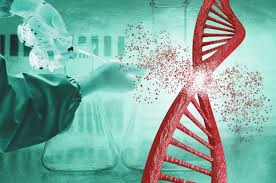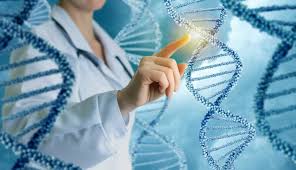
Gene Hacking: The Dark Side of DIY Science
In a world where CRISPR kits can be delivered to your doorstep and genetic editing is no longer confined to high-tech labs, a new era of biology is unfolding—one where anyone with a laptop, a pipette, and internet access can start hacking DNA.
But as powerful as this movement is, it also raises a chilling question: What happens when science leaves the lab—and enters your garage?
Welcome to the shadowy frontier of DIY gene hacking, where innovation collides with ethics, safety, and the very fabric of life.
🧬 What Is DIY Gene Hacking?
DIY gene hacking, also called biohacking or garage biology, refers to individuals or amateur scientists conducting genetic experiments outside of traditional institutions. With the cost of genetic engineering tools like CRISPR-Cas9 plummeting and knowledge freely available online, a wave of non-professionals has begun:
-
Modifying yeast to brew glowing beer
-
Attempting to treat diseases with self-injected DNA therapies
-
Engineering bacteria to detect toxins or pollutants
At first glance, this looks like a democratization of science. But the risks may be far greater than many realize.
⚠️ The Risks Lurking Behind the Curiosity
1. Unregulated Genetic Modification
Without institutional oversight, there’s no quality control, no peer review, and no guarantee of safety. A well-meaning experiment could:
-
Introduce dangerous mutations
-
Create antibiotic-resistant microbes
-
Lead to harmful exposure—especially when injected into human tissue
2. Biosecurity Threats
DIY science blurs the line between innovation and bioterrorism. The same tools used to cure disease can, in the wrong hands, be used to create harmful pathogens. Intelligence agencies and public health officials have flagged DIY biohacking as a potential national security threat.
3. Medical Misuse
Some biohackers claim to treat their own illnesses or enhance performance using unauthorized gene therapies—often without proper trials or understanding. One infamous example is Josiah Zayner, who injected himself with CRISPR live on camera, triggering worldwide controversy.
This kind of self-experimentation can be dangerous, misleading, and even fatal.
🧪 Why It’s Catching On Anyway
Despite the dangers, DIY gene hacking continues to grow. Why?
-
Affordability: Gene-editing kits now cost as little as $150.
-
Accessibility: Countless YouTube tutorials and open-source guides teach how to extract and edit DNA.
-
Curiosity: For many, it’s about exploration—using the tools of the future in their own hands today.
-
Mistrust of Institutions: Some biohackers feel traditional science moves too slowly or is overly controlled by big corporations.
To them, DIY biology is a form of rebellion—disrupting medical monopolies and sparking personal innovation.
🧠 Where Ethics and Law Collide
There are major gray areas when it comes to the legality of gene hacking at home:
-
In the U.S., there are no federal laws banning CRISPR use on yourself, though distributing unapproved therapies is illegal.
-
Most countries have bioethics boards, but enforcement is often limited when research is done in private.
-
The FDA has issued warnings but has yet to fully regulate or criminalize most DIY genetic editing unless it poses a direct health risk.
The big question is: Just because you can do it—should you?
🔍 The Scientific Community’s Response
Mainstream researchers are torn. Some believe citizen science encourages learning and innovation. Others argue that it:
-
Damages public trust in science
-
Risks severe backlash if a DIY experiment goes wrong
-
Distracts from legitimate, peer-reviewed research
To bridge the gap, some communities have created biohacker spaces—shared labs with equipment, training, and ethical guidelines. These hubs aim to combine the curiosity of biohackers with the safety protocols of real science.
🧬 A Glimpse Into the Future
DIY biology may be a permanent part of the landscape—so what comes next?
-
Community-led breakthroughs could lead to new treatments or environmental solutions.
-
Biological black markets may emerge online, selling unregulated gene kits.
-
Government crackdowns could increase after high-profile accidents.
-
CRISPR-enhanced humans might one day trace their origins back to a garage experiment.
It’s a brave new world—and the blueprint for life is now editable at home.
Final Thought
Gene hacking is no longer reserved for elite researchers. It’s in garages, basements, and internet forums—and that’s both exciting and deeply unsettling. While the spirit of exploration is noble, life itself is not software to casually edit.
As this wild frontier expands, we must ask hard questions about where innovation ends—and accountability begins.
Science is powerful. But in the wrong hands, it’s also dangerous.
